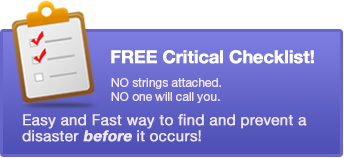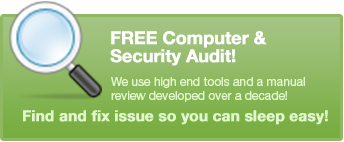Working from home or the road with remote access is simply amazing. This article will give you the tricks to get the most out of it, and of course make sure you are secure from the bad guys.
Not only do we help a ton of clients do this effectively, we do it ourselves too! Our office manager routinely spends months (even years) in Europe working. She takes calls, shares files with us, messages and emails, and prints in our office. Other than not seeing her in person, you’d never know that she is a continent away!
There are two major ways to work remotely; setting up a “tunnel” to the network to get files or remotely controlling a computer.
VPNs
You may have heard of a VPN which is the tunnel method. When you connect with a VPN, you are making a secure tunnel over the internet from home/road to the office. Think of it as a VERY long network cable to your office. It’s secure and easy and you do not have to have a computer to remote into at the office.
The downsides are that you need to have the programs at home and not everything works over a VPN. Just because you can get to your “data” at the office over a VPN doesn’t mean you have the program to open the file. Imagine you have an Excel spreadsheet, you can get to the spreadsheet but if you don’t have Excel installed at home, you can’t see it. And lots of the time you will have programs at the office that you don’t have at home. You can of course install many of them at home but it’s a pain and not always possible.
The other thing is a VPN uses your internet connection which is often 100X slower than your connection in the office. Not a problem for small files like Word and Excel but if you have a database like an accounting program, customer management program or whatever, it may be impossible to open.
Remote Control
Another method is remote control. You basically take over the screen of a computer in the office. It’s just like you are sitting in the office. The only thing that moves over the intent is what is on the screen and what you send back via your keyboard and mouse. Since you are using the computer in your office, you have all the programs and it looks exactly like what you are used to. Even databases usually work just fine as no data is really moving over the internet, just pictures of what is on your screen.
One downside of this method is that you tie up a computer in the office. Fine if you are remoting into your own work computer which no one else needs but, if you have a remote worker who works from home or the road all the time, you will need a computer they can remote into and when they are doing that, no one else can use the computer.
Two Ways to Remote In
You can pay monthly for a remote control program which does most of the setup for you. Something like LogMeIn or GoToMyPC. Or, you can use the built in Windows Remote Desktop. The windows remote desktop system requires a bit of setup as you have to allow it through your firewall but once you set it up, it’s very smooth, powerful and free!
Our typical go to for remote access is not just a VPN connection but rather a remote control method, specifically Windows Remote Desktop. But what do you do if you have a lot of people remoting in? Buy a computer for all of them!? Or if someone works from home and never comes in, do you need to buy a computer for the office to just sit there?
When you have several users remoting in there is a more powerful system called Remote Desktop Server. It is a special server you can setup designed to let many people remote in without dedicated computers. This special server allows many people to remote into it simultaneously and gives them each their own screen to see. Very cools stuff!
Security
No conversation about remote access is complete without a discussion about security! If YOU can remote in, that leaves an option for BAD guys to remote in! And if they get into your data/network, it can get very bad, very quick.
Whenever you are remoting, ALWAYS use strong, long and unique passwords. That helps but isn’t enough! There are ways to hide that your firm has remote access. One example is to use both of the methods discussed in this article. Setup a VPN and remotely view a computer. You get the security of the VPN but also the convenience of remotely viewing a computer.
Remote access is one of the top hacks bad guys routinely use to get in. It is also frequently found in “PCI Scans” that credit card companies do when a company accepts credit cards. So if remote access isn’t done properly, the credit card company may revoke your firm’s ability to take credit cards. But when done right, it isn’t hard, it’s very powerful and it’s pretty fun even!



